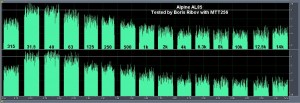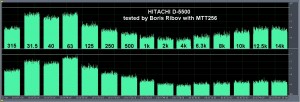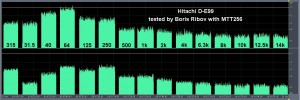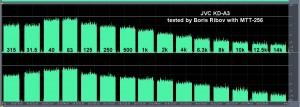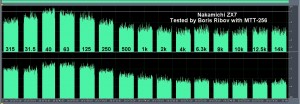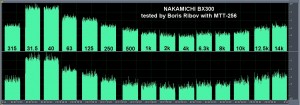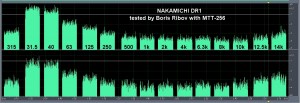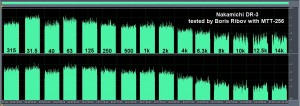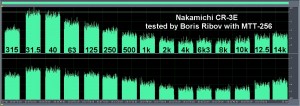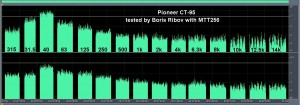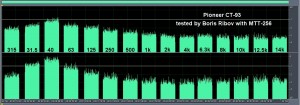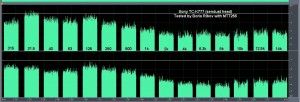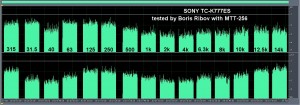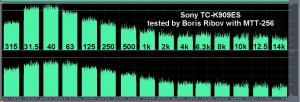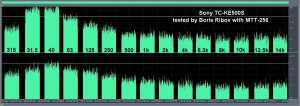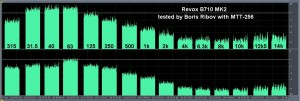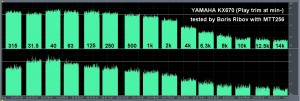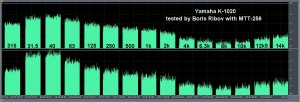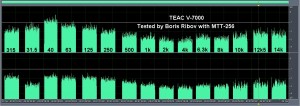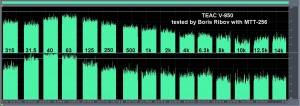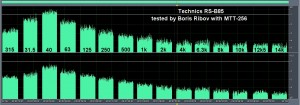What’s New:
10 Jan 2019: adding Sony TC-K777 (MK1 – Sendust head), Nakamichi 680ZX, Alpine AL85
09 Dec 2017: adding Technics RS-B905, Aiwa Excelia XK-009, Pioneer CT-93, Pioneer CT-S830S charts;
01 Oct 2017: adding YAMAHA K-1020 chart;
28 Aug 2017: adding TEAC V-7000 chart;
27 Aug 2017: adding a Nakamichi ZX7 chart;
The frequency response of the playback channel is important for sound signature of every cassette deck. The standard was not properly followed on some early cassette decks. The IEC Prague 1981 is the last standard, defined the frequency response of the magnetic flux. Some early Nakamichi decks were very close to the final standard and the Nakamichi did not changed their playback frequency response. Nakamichi noticed the error in the early DIN measurement method used by BASF and Philips. The final effect after the correction on IEC-1981 is that the high frequency recording flux was reduced and the tape does not saturate on low speed. The correction of head loss is made in the playback amplifier. The following measurement were done using standard IEC-1981 test tape. This tape follows the last recommendations for the frequency response of the playback channel.
AIWA brand models: Excelia XK-009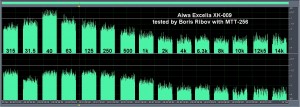
AKAI brand models: GX-67, GXC-709D, GX-F91
Alpage & Alpine brand models: AL-300, Alpine AL85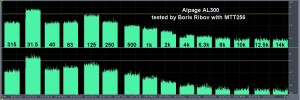
Hitachi brand models: D5500, D3300M, D-E99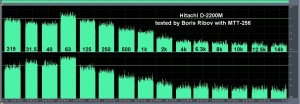
Nakamichi brand models: Dragon, ZX7, BX-300E, DR1, DR3, CR-3E, 480, 680ZX
Pioneer brand models: CT-A7, CT-95, CT-93, CT-S830S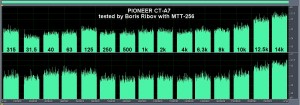
Sony brand models: TC-K55, TC-K790ES, TC-K909ES, TC-K777MK1, TC-K777ES (MKII), TC-KE500S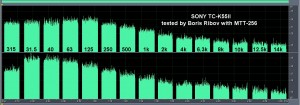
Tandberg brand models: TCD-3014A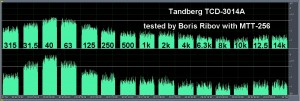
Yamaha brand models: KX670, KX1200, K1020
The newly tested Yamaha KX1200 show full compatibility with the current IEC standard. Some of the measurement of the machine are interesting.
We tested the signal to noise ration on the following conditions: reference +4dB=250nWb/m=550mV (at line out), without using a-weighted filter. The machine shows the following results:
Position Normal (Type I) on play without a tape into the cassette holder:
- without Dolby: 50.72 dB
- using Dolby B: 56.74 dB
- using Dolby C: 58.54 dB
- using dbx: 67.57 dB
Position Normal (Type I) with erased Fuji DR:
- without Dolby: 45.56 dB
- using Dolby B: 53.97 dB
- using Dolby C: 57.30 dB
- using dbx: 62.76 dB
Position High (Type II – chrome) with erased Quantegy 472:
- without Dolby: 50.19 dB
- using Dolby B: 56.53 dB
- using Dolby C: 58.41 dB
- using dbx: 63.21 dB
Note that this readings are based on the criteria of reference level corresponding to 250nWb/m (not to 3% third harmonic distortion), also there is no weighted filter. We also measure the frequency response of the recording chain based on high level (for flat response) and -3 dB at 21kHz. The results show:
- Type IV (Sony XR): flat up to 0dB on the meter (160nWb/m = 0dB VU)
- Type II (TDK DJ2): flat up to -8dB on the meter (64nWb/m ~ -8dB VU)
- Type I (Fuji DR): flat up to -10dB on the metter (50nWb/m ~ -10dB VU)
Now the same tapes with -3dB roll off at 21kHz:
- Type IV (Sony XR): up to +4dB on the meter (250nWb/m = +4dB VU)
- Type II (TDK DJ2): up to -6dB on the meter (80nWb/m ~ -6dB VU)
- Type I (Fuji DR): up to -8dB on the metter (64nWb/m ~ -8dB VU)
The measured Wow&Flutter was about 0,035-0,04% WRMS, corresponding to JIS. KX1200 is one of the interesting models, because of its non standard low frequency time constant in PB amp EQ. The standard define 3180uS but this model uses 2700uS. That reduces the boost in the low frequency PB amp, and that fact is due the self low-frequency boost in the amorphous PB head (maybe due to the contour effect). As can be seen, the resulting PB frequency response is flat down to 31Hz. The very low frequency roll off at about 20Hz is compensated in the recording chain, where there is a low frequency boost applied in the chain of the low-frequency filter before the rec-amp buffer.
Teac brand models: V-8000S, V-7000, V850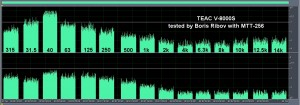
Technics brand models: RS-B905, RS-B85, RS-B965
Not long ago we tested another good Technics cassette deck. The model is RS-B85, which is very close to the sound signature of the top model RS-B100. As can be seen, the old Technics models do not follow the IEC-1981 Prague standard. The first one which follows the standard is the RS-B905. The RS-B965 is one of the models, that follows quite well the current IEC standard. Other good competitors are the Sony TC-K790ES, Nakamichi Dragon, Yamaha KX1200 & KX670 and the Pioneer CT-A7 and the Tandberg TCD-3014. There are many existing models with pleasant sound signature, manufactured after the 1982, which are not tested yet.


